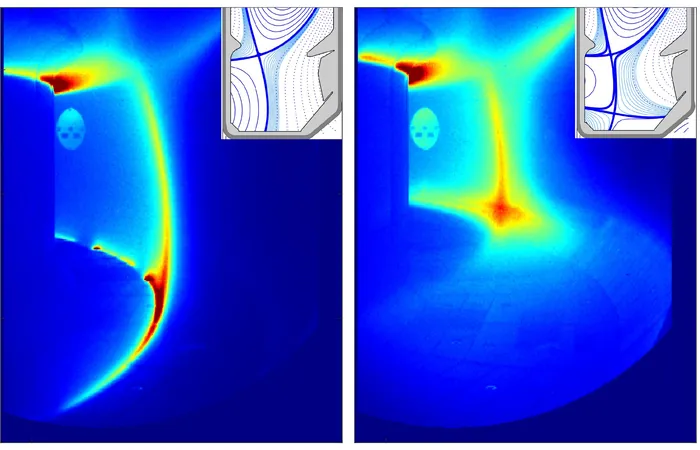
Revolutionary X-Point Radiator: The Key to Preventing Tokamak Overheating!
2025-05-31
Author: Yu
In the race to harness the power of nuclear fusion, researchers are making strides with groundbreaking innovations that promise to unlock a sustainable energy future. Nuclear fusion, the process of fusing two light atomic nuclei to create a heavier one, holds immense energy potential without generating greenhouse gas emissions.
Among the frontrunners in fusion reactor design is the tokamak—a sophisticated device utilizing a doughnut-shaped magnetic field to confine and heat plasma, allowing fusion reactions to occur. However, these devices face a significant hurdle: managing the extreme heat generated during fusion. Interaction between the plasma and the reactor walls can cause serious damage, threatening both their longevity and efficiency.
Enter the latest game-changer from researchers at the TCV tokamak experiment at École Polytechnique Fédérale de Lausanne (EPFL). They've unveiled a novel plasma radiation method aimed at preventing overheating in tokamaks, allowing reactors to efficiently release excess heat and boost overall performance.
This innovation, called the X-point target radiator (XPTR), was detailed in a recent paper published in Physical Review Letters. Kenneth Lee, the lead author, emphasized the challenges future fusion power plants face in controlling divertor heat loads. They propose that by integrating a secondary X-point along the divertor channel, they can enhance operational capacity while maintaining core plasma confinement.
In a tokamak, an X-point represents a location where magnetic field lines intersect purely toroidally, crucial for shaping the plasma and directing heat away from the core. The XPTR capitalizes on this principle, converting a significant portion of plasma heat into uniform radiation near the X-point.
In their experiments, the team introduced a secondary X-point positioned outside the plasma confinement zone. This addition enhances heat removal capabilities, mitigating damage risks and prolonging the tokamak's lifespan.
Lee explained, "By leveraging the unique magnetic shaping of the TCV tokamak, we've observed localized radiation far from the plasma core, ensuring core performance is preserved while cutting down divertor heat loads." This new X-point radiator proved to be highly stable across various operational conditions, offering a more reliable solution for managing power exhaust in fusion plants.
Initial tests revealed that the XPTR more effectively eliminated excess heat from magnetically confined plasma than traditional methods. Excitingly, this innovative configuration is expected to feature in next-generation tokamaks developed by Commonwealth Fusion Systems in collaboration with the Massachusetts Institute of Technology (MIT).
Lee added, "We are now embarking on high-power experiments to explore the capabilities of the XPTR alongside advanced numerical simulations to deepen our understanding of its mechanisms. The upcoming SPARC tokamak aims to integrate the X-point target divertor into its design, underscoring the significance of our findings."



 Brasil (PT)
Brasil (PT)
 Canada (EN)
Canada (EN)
 Chile (ES)
Chile (ES)
 Česko (CS)
Česko (CS)
 대한민국 (KO)
대한민국 (KO)
 España (ES)
España (ES)
 France (FR)
France (FR)
 Hong Kong (EN)
Hong Kong (EN)
 Italia (IT)
Italia (IT)
 日本 (JA)
日本 (JA)
 Magyarország (HU)
Magyarország (HU)
 Norge (NO)
Norge (NO)
 Polska (PL)
Polska (PL)
 Schweiz (DE)
Schweiz (DE)
 Singapore (EN)
Singapore (EN)
 Sverige (SV)
Sverige (SV)
 Suomi (FI)
Suomi (FI)
 Türkiye (TR)
Türkiye (TR)
 الإمارات العربية المتحدة (AR)
الإمارات العربية المتحدة (AR)